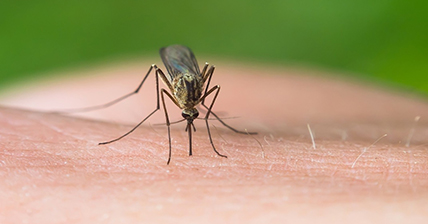-
Do Mice Repellent Pouches Work?Feb 19 , 2025
Mosquitoes are notorious pests that can cause significant harm to both humans and animals. They are known for their blood-sucking habits, shelter preferences, activity patterns, and seasonal ebb and flow. Understanding these characteristics is crucial in developing effective strategies for preventing and controlling mosquito-borne diseases.

Adult mosquitoes have distinct habits related to their diet. While male mosquitoes feed on animal juices, female mosquitoes need to feed on blood to develop and produce eggs. Different mosquito species exhibit different levels of selectivity for different hosts. For example, some species prefer human blood, while others prefer animal blood. Female mosquitoes rest in dark and humid places after sucking blood to complete the digestion of the blood and the development of their ovaries. The different environmental conditions and activity habits of mosquitoes classify them into three types: domestic, semi-domestic, and wild.
The primary purpose of mosquito activity is to find food, mates, and suitable places to lay eggs. The activity of Culex and Anopheles sinensis peaks at half an hour after sunset in the evening and night, while Aedes albopictus prefers to move during the day. Mosquitoes are adept at flying, and their flying ability varies across species, with some able to fly hundreds of meters or even farther. However, the range of activities of mosquitoes depends on the distance between food sources and spawning places, and the flight route is often tortuous, leading to an effective flight distance of about 50 to 150 meters.
Changes in the number of mosquitoes are influenced by environmental factors such as temperature, rainfall, humidity, food, sunlight, and vegetation. Temperature, rainfall, and breeding habits have the greatest impact on the growth and decline of mosquito populations. The climate across different regions of a country can also affect mosquito activity and population size. In areas with suitable environmental conditions, mosquito populations increase during the appropriate seasons and ecological environments and decrease or even disappear when conditions become unfavorable.
The prevention and control of mosquito-borne diseases require a comprehensive approach that considers various factors such as mosquito habits, environmental conditions, and seasonal variations. Igniting mosquito-repellent incense can help repel or kill mosquitoes in indoor spaces, but it is not sufficient for controlling mosquito populations in outdoor spaces. Understanding the flight distance of adult mosquitoes is crucial in defining the scope of prevention and control measures in areas with mosquito-borne diseases. For instance, a 100-meter radius around the center of a dengue fever outbreak is considered the key control area, while the second control area has a radius of 300 meters.
In conclusion, understanding the habits, preferences, and seasonal variations of adult mosquitoes is essential in developing effective strategies for controlling mosquito populations and preventing mosquito-borne diseases. While measures such as mosquito-repellent incense can help repel or kill mosquitoes in indoor spaces, comprehensive approaches that consider various factors, including environmental conditions and flight distance, are required for effective mosquito control.